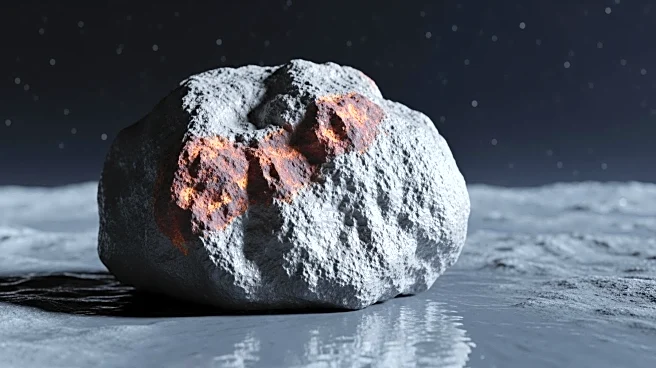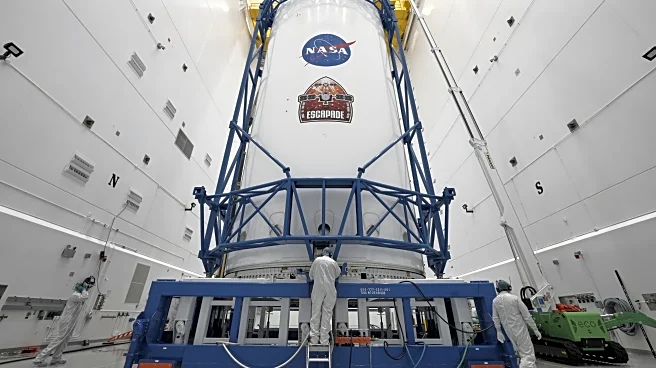What's Happening?
China's Chang'e-6 mission has made a groundbreaking discovery on the Moon, revealing the presence of oxidized minerals such as hematite and maghemite in lunar rocks. These findings were obtained from samples collected in the South Pole–Aitken Basin, one
of the Moon's oldest and largest impact craters. The research, published in Science Advances, utilized advanced techniques like electron microscopy and Raman spectroscopy to confirm the presence of these minerals. This discovery challenges the long-held belief that the Moon's surface is too barren for oxidation due to its lack of atmosphere and low oxygen levels. The minerals are believed to have formed during intense heat generated by asteroid impacts, which created a high-oxygen vapor cloud, facilitating oxidation.
Why It's Important?
The discovery of oxidized minerals on the Moon has significant implications for our understanding of lunar geology and the processes that occur on airless celestial bodies. It suggests that the Moon can host oxidation under specific conditions, altering the perception of its geological history. This finding could also provide insights into the Moon's magnetic anomalies, as hematite and maghemite are known magnetic carriers. Understanding these processes may help explain the Moon's magnetic signatures and contribute to broader scientific knowledge about planetary formation and evolution. The research bridges the gap between remote sensing data and physical samples, offering a more comprehensive view of lunar surface dynamics.
What's Next?
The study opens new avenues for lunar exploration and research, particularly in understanding the Moon's geological evolution and magnetic properties. Future missions may focus on collecting more samples from different lunar regions to further investigate the presence and formation of oxidized minerals. Scientists may also explore the implications of these findings for other airless bodies in the solar system, potentially revising theories about planetary surface processes. Collaborative efforts between international space agencies could enhance the scope and depth of lunar research, leading to new discoveries and technological advancements in space exploration.
Beyond the Headlines
The discovery of oxidized minerals on the Moon raises questions about the ethical and legal dimensions of lunar exploration. As countries and private entities plan future missions, the potential for resource extraction and its impact on the Moon's environment becomes a topic of discussion. The findings also highlight the importance of international cooperation in space exploration, as shared knowledge and resources can lead to more significant scientific breakthroughs. Additionally, the study may influence cultural perceptions of the Moon, shifting its image from a barren landscape to a dynamic environment with complex geological processes.














